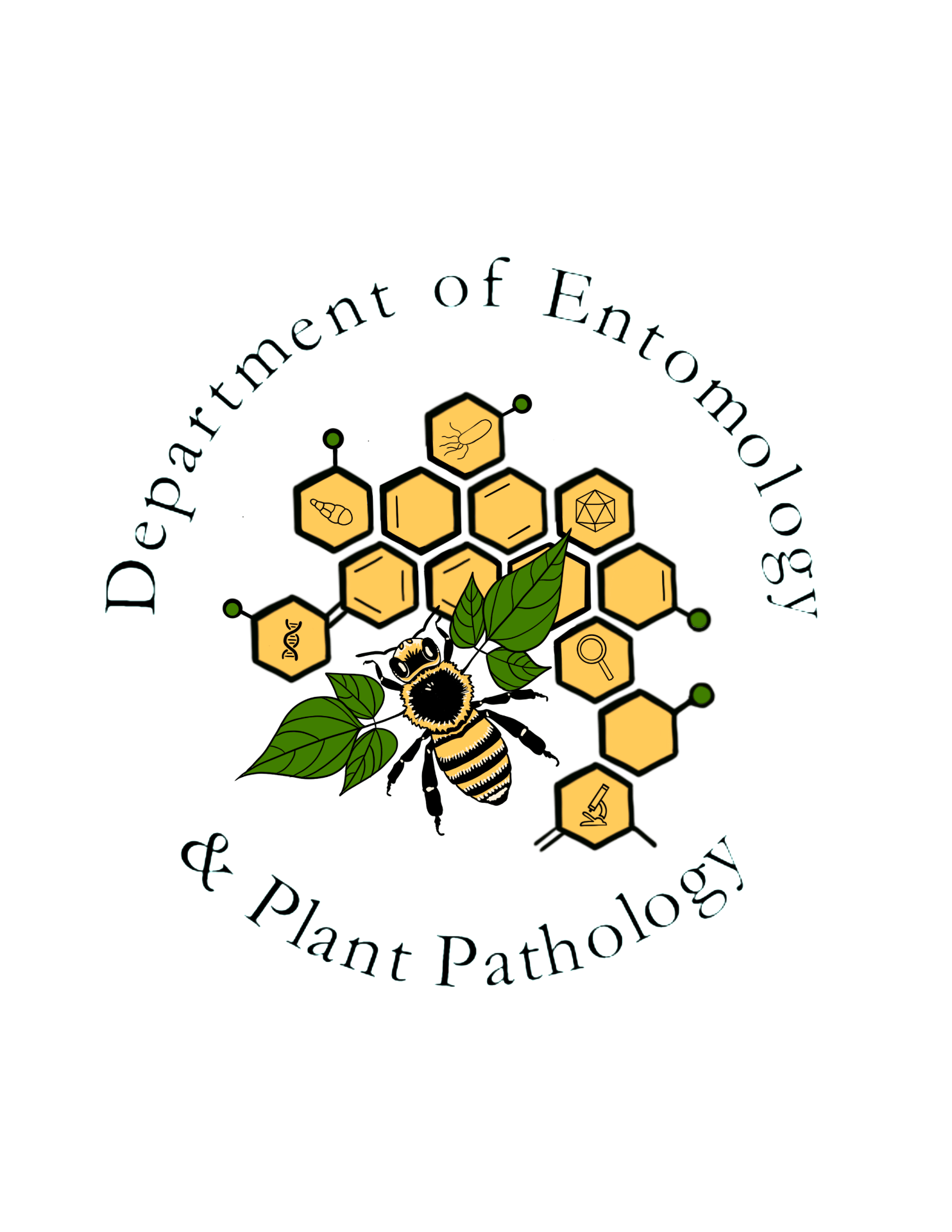A southeastern grass leafhopper
Order: Homoptera
Family: Cicadellidae
Genus and species: Cuerna costalis (Fabricius)

The genus Cuerna came into prominence in the 1950s, after it was discovered that species in this and several other genera are economically important as vectors of plant diseases. Cuerna costalis was first shown to transmit phony peach disease (Turner 1949), and later it was shown to vector Pierce’s disease of grapes (Kaloostian 1962). The genus Cuerna was revised by Nielson (1965), and the Canadian species were reviewed by Hamilton (1970).
Adults are about a third of an inch long, with females slightly larger than males. The head, pronotum and scutellum are black with ivory markings, and the forewings have narrow alternating stripes of red and black. An ivory stripe runs from in front of the eyes along the entire lateral margin of the body. The legs are red and black. This species occurs primarily in the southeastern United States, with large populations throughout the Coastal Plain from North Carolina to east Texas. It also occurs west to New Mexico and north to New York and southern Ontario (Turner and Pollard 1959).
The diet of leafhoppers consists solely of nutrient-poor xylem fluid from a variety of plants. This fluid is comprised mostly of water with small amounts of organic and inorganic substances. Leafhoppers extract the fluid with a sucking apparatus known as a cibarial pump. While feeding on one plant, a leafhopper can transmit to it a disease organism that it acquired while feeding on a different plant. When the bacterium Xylella fastidiosa is transmitted, phony peach and Pierce’s diseases may result.
Cuerna costalis feeds primarily on grasses, but it also feeds in early spring on low broad-leaf weeds. Some individuals move to stems of cotton, sunflower, ragweed, or even seedling peach later in the season. The species has been collected from peanuts, johnsongrass, Helianthus sp., Amphiachyris sp., corn, lespedeza, strawberry, beets, wheat, grapes, and peach. Females lay eggs in the lower surfaces of grass blades. They have been found in Johnson and Bermuda grass, Texas millet, and crabgrass. There are at least two full generations per year, and at least in some areas there is a partial third generation as well. This species normally winters as an adult sheltered in matted grasses in open fields, orchards, or along the margins of woods.
References:
Hamilton, K. G. A. 1970. The genus Cuerna (Homoptera: Cicadellidae) in Canada. Canadian Entomologist 102: 425-441.
Kaloostain, G. F. 1962. Leafhopper vectors of Pierce’s disease virus in Georgia. Plant Disease Reporter 46: 292.
Nielson, M. W. 1965. A revision of the genus Cuerna (Homoptera, Cicadellidae). United States Department of Agriculture Technical Bulletin 1318: 48 pages.
Turner, W. F. 1949. Insect vectors of phony peach disease. Science 109: 87-88.
Turner, W. F. and H. N. Pollard. 1959. Life histories and behavior of five insect vectors of phony peach disease. United States Department of Agriculture Technical Bulletin 1188: 28 pages.
